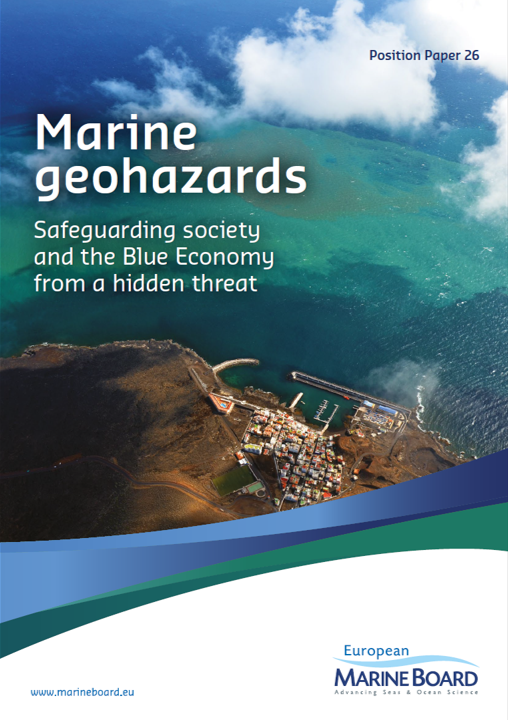
Today EMB launches its Position Paper Nº26 on Marine Geohazards: Safeguarding Society and the Blue Economy from a Hidden Threat. Commonly known marine geohazards, such as tsunamis and earthquakes, and lesser-known hazards, such as migrating bedforms and submarine mass movements, pose threats to society and Blue Economy sectors. Those threats include harm to people and their property, the devastation and disappearance of valuable land near the shoreline, harm to fisheries, the decrease of tourism in the area, and the destruction of seafloor installations, such as pipelines for oil and gas, communication cables and windfarms. Moreover, as coastal human populations and the economic activities conducted in the marine and coastal environments are increasing, society will be more exposed and vulnerable to marine geohazards. One of these economic activities are the proposed energy links using underwater cables between different European counties. A break in those cables will have a significant impact on the energy distribution in the future. The UN Decade of Ocean Science for Sustainable Development i.e. strives towards a safe Ocean where life and livelihoods are protected from Ocean-related hazards. Thus, this Position Paper aims to put marine geohazards on the agenda of policy and research.
Despite the significant threats that marine geohazards pose, there is limited awareness and knowledge on vulnerability and exposure to these events, especially in a European context. Considering that marine geohazards are unavoidable and will certainly continue to occur in the future, it is crucial to improve and expand our knowledge of their processes, trigger mechanisms and precursors. This knowledge is necessary to raise general awareness and to develop risk mitigation strategies, e.g. early warning mechanisms that reduce risks and enhance resilience of the marine- and coastal areas.
The publication presents an overview of the type, distribution and impact of marine geohazards in European coastal regions and on several Blue Economy sectors. It highlights novel scientific approaches that broaden our understanding of these hazards. Moreover, it recommends that marine geohazards are considered in maritime spatial planning and other policy areas. The document points towards relevant actions that would ensure the development of effective risk-mitigation and science-based management practices and policies, thereby contributing to protect coastal population and economic activities at sea.
The Position Paper can be downloaded here.